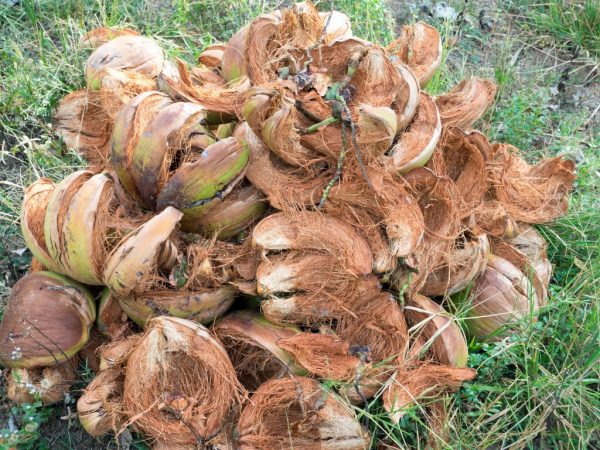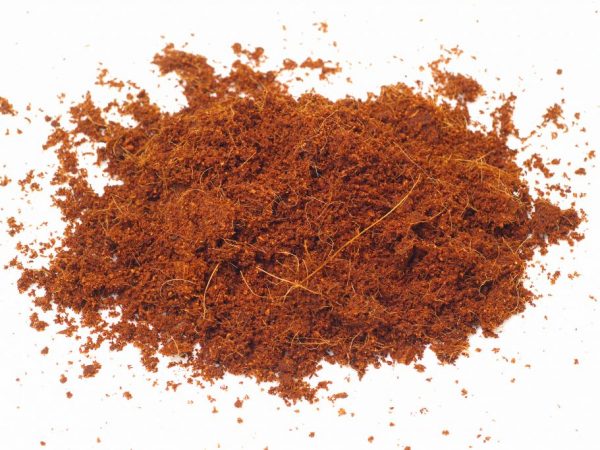How to use coconut chips for orchids
For planting exotic plants, coconut peat is used, which is a type of nut substrate. Coconut chips are also used for orchids and other decorative flowers.

How to use coconut chips for orchids
Coconut substrates
Coconut palm fruit substrate is an organic medium for growing mushrooms, vegetables, berries, fruits and various crops, where the peel acts as a raw material. It consists of fibers from 15 to 33 cm long and coco peat, which is a binder. When processing the peel, these components are separated. Substrates are made from peat.
Ropes, brushes, mattresses, rugs are made on the fiber. This substance is often a constituent part of substrates. The compact compressed fiber packaging is called "Coconut briquette".
Another method of processing walnut skins eliminates fiber extraction. In this case, it is cut into shares of various sizes. The chunks that contain peat and fiber are called coconut chips. They are used as a supplement to substrates, including when growing exotic plants, including orchids.
Benefits of Coconut Chips

Special primer
Chips as a growing medium have a number of advantages:
- Elementary recycling. Growers are almost always faced with the problem of disposal of mineral wool. Coconut chips, on the other hand, can simply be buried after use and used in this way to improve its structure.
- Optimal pH. Coconut does not need additional acid regulation due to the fiber pH level that is suitable for most crops.
- Increased air capacity. The coconut fruit tends to provide optimal proportions of water and air in the root area. Only mineral wool has this ability, so these substrates are the undisputed leaders in hydroponic applications. An excess of moisture in mineral wool leads to an insufficient amount of air in the root part, which significantly inhibits its growth and development. Chips, on the other hand, saturate the rhizomes with the necessary oxygen, even with excess water. This effect is due to the high porosity of the fiber.
- Water-retaining properties. The spongy structure allows coconut chips to hold moisture up to 5 times their own weight. In this parameter, they surpass peat and compete with mineral wool.
- Sterility. There are no harmful organisms in the coconut substrate. This property will be appreciated by flower growers who still have to use many means to eliminate plant diseases and pest plaque.
- Hydrophilicity. Unlike its counterparts, the nut is extremely water-loving. Dried chips can easily reclaim water.
- Resistant to degradation. The unique characteristics in coconut can be maintained over a long period. Lignin in its composition slows down all processes associated with decomposition.As a result, the chips are not deformed, the air capacity and moisture content remain the same.
- Buffering. Chips can store nutrients and transfer them in case of insufficient supply to orchids.
- High quality. The properties of chips depend on the area where the coconut is grown and how the peel is processed. It is initially characterized by increased levels of chlorine, sodium and potassium. Bringing the indicators back to normal is achieved by soaking the peel in fresh water. The longer this process takes, the less salt remains in the coconut. As a rule, soaking takes several months.
Substrate application
Coconut chips are thoroughly sterilized prior to use. Before planting orchids, the substrate is soaked and heated in boiled water. It should be at room temperature and placed in a kind of greenhouse (pots or special seedling cassettes).
The swollen substrate is thoroughly washed, and then filtered with gauze or net curtains. Rinsing in clean water should be done at least 10 times: this will eliminate the salts. Dried chips are ready to plant flowers.
In Asian countries, there are orchids planted in parts of coconuts nailed to trees.
Summarizing
Thanks to their advantages, coconut chips are the optimal substrate for growing orchids and a real find for flower growers.


